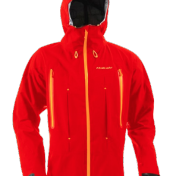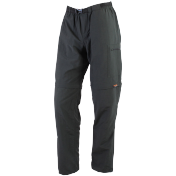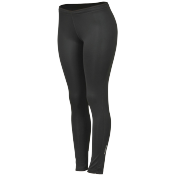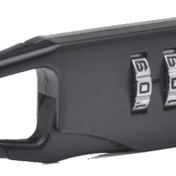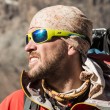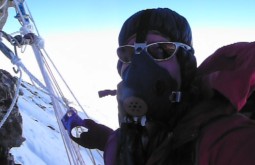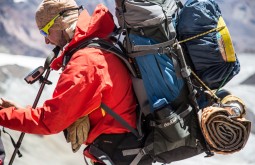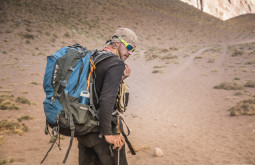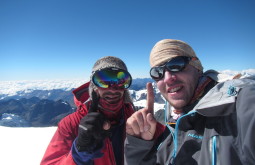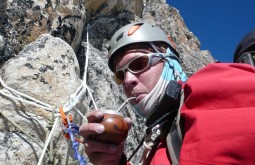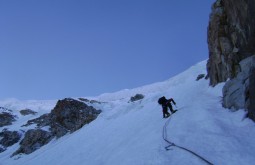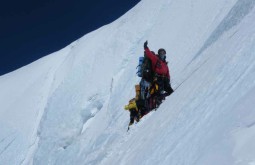FAQ
How much equipment will I have to carry? Can I make it?
Your backpack will never weigh more than 7 kg. The rest of it will be carried by mules.
Is there communication on the mountain?
Yes! our guides carry sat phones at all times and you can easily make emergencies phone calls for U$3/minute. Recently a mobile phone antenna has been installed at BC. Its power however is a little unreliable (generator and solar power) and one shouldn’t fully rely on this type of communication. Our guides carry VHF radios and can communicate between camps at any time.
Would you guys call my family and tell them I’m alright?
Of course! Even better! We have a blog that is updated every day! We normally post messages or photos about the expedition progress. Please visit our Facebook page and check the latest posts.
Do I have to share tents to anyone?
Yes. All tents are shared by every 2 persons and this is previously agreed.
Can I charge my iPhone battery or my camera?
Yes! At the base we have solar panels to charge batteries, iPods, etc. Of course this changes when there’s no enough sunlight.
What if I need a rescue?
Helicopter rescues can be performed at Confluencia, Plaza de Mulas and Nido de Condores (depending upon weather conditions). Last NOV20th, 2017 The National Park has changed their policy and NO LONGER INCLUDES HELICOPTER RESCUES in their permit. So from now any rescues due to medical reasons aren’t included. All clients now are required to have a RESCUE INSURANCE.
You will be required to make the payment (From USD1400) in cash, and they will give you a receipt for you to aske your insurance for a reimbursment.
What if I abandon or quit the expedition?
If you quit the expedition 1 week before departure, it is possible to recover part of your investment. Contact us and find out more.
If you quit the expedition in Mendoza, you can continue enjoying the services we provide you such as transportation and hotel. However we can not pay back the money you invested because logistics will already be hired.
If you quit the expedition after we left Mendoza, you will have to cover individual transportation and accommodation costs. Everyone who leaves the expedition for personal or health reasons, should pay these costs.
If you give up at Plaza Francia or Confluencia, you will never have to go down alone. Usually we coordinate your descent with more expedition members or also with guides from other known expeditions. One of the guides will always be with you. Also, Aconcagua is a very strict mountain. They wouldn’t allow a paying client to go down alone. You should have U$150 ~ U$250 for extra expenses in case you abandon the mountain.
What’s your philosophy?
We accept women and men of any age, experience or ambition. We ask our members to be patient, respect the leader’s decisions and never go up or down alone.
Remember that you don’t pay us to take you to basecamp, you pay mountaineering professionals with several years experience to help you up and down a mountain in the safest possible way.
Our itinerary may seem slower than other companies, this is due to a longer acclimatisation plan based on safety. More days will actually improve the chance of reaching your goals!
How much money should I take?
You might have to spend money on dinner and lunch in Mendoza, equipment rentals, telephone bills, internet, showers, tips, etc. You might also have extra expenses in case you decide to abandon the mountain. We recommend you to bring a total of $850 in US currency for the whole trip. Please check the expenditure list:
Climbing permit (non latin americans): U$300
Dinner and lunch in Mendoza (average of 3): U$100
Equipment rentals (average): U$200
Cost of abandoning trip: U$550 Helicopter costs: U$1400 – USD2100
Can I use credit cards in Argentina?
We do not recommend you using credit cards in Argentina. In addition to the up to 25% tax, it is quite possible that your credit card might not work due to poor communication system. Only major hotels and supermarkets might accept foreign credit cards. The financial situation in Argentina is very unstable so we highly recommend you to bring US dollars.
How much is the permission to trek to Aconcagua basecamp?
Last time we’ve checked, the 7 day trekking permit costs U$305 for non-latin americans.
What sort of training do I need for this trek?
For trekking to Aconcagua BC we recommend you to start training at least two months before, depending on your physical condition. Aerobic exercises like running and cycling are very useful. Ideally ask a professional to recommend you a good aerobic training program. A very effective exercise is to go hiking with a rucksack in any trails. BEWARE of injuries! We have had some cases of clients who have trained too much and ended up hurting themselves.
What experience do I need for this trip?
To get to Plaza de Mulas we recommend you to have experience in multiple day hikes.
How is the weather in Aconcagua?
At normal summer conditions we might have fairly hot days during the approach and cloudy/windy afternoons. At basecamp weather is normally clear and warm during day time and drops to below zero overnight. So basically expect all possible conditions: rain, hail, wind, boiling hot days, freezing cold days, storms…
What if I have a special diet?
Please tell us in advance about any food issues you might have and also please remind our guides about it too. Unless you bring your own food, we cannot help you if you are macro-biotic, vegan or celiac due to extreme logistical difficulties. Contact us and let us know about your food restriction.
Where will I sleep during the hike to BC?
In the two nights in Confluencia, you will stay in a tent shared by two people. On the night after Mendoza, you’ll sleep in a mountain hut in bunk bed.
Is there water during the approach?
Yes, we will provide you with fresh water in all camps.
What if I have a health problem?
Our leader Maximo Kausch has extensive experience in mountain medicine and can solve most of problems you might encounter. in addition, we have doctor at BC and Confluencia.
What if I need a rescue?
Helicopter rescues can be performed at Confluencia and Plaza de Mulas (depending upon weather conditions). All helicopter rescues authorised by basecamp doctors are free.
I was climbing in Peru before and I had a hard time communicating to my guide. Do your guides speak any english?
Yes, our leader Maximo Kausch has lived in the UK for 10 years and speaks fluent english. Please check our team’s information and find out about our guides’ communication skills.
Where do we go to the toilet on the mountain?
There are toilets in Plaza de Mulas and Confluencia. Anything between that is taken back apart from liquids. For the ‘solid business’ we do it in a bin bag, tight a knot and bring it back to camp.
What if I want to rent equipment?
It is very easy to rent equipment in Mendoza. Check out the list of equipment needed before buying anything. Rentals can be paid in dollars or pesos. These are the costs for the 2017 season. Prices are for the whole expedition:
- Windproof Jacket USD 34
- Trekking pole USD 16
- Trekking boots USD 28
- Duffel USD 20
- Fleece jacket USD 16
- Thick down Jacket USD 48
- Fleece gloves USD 8
- Sunglasses or Goggles USD 16
- Rucksack USD 28
- Windproof pants USD 28
- Sleeping bag -8ºC USD 40
What’s the temperature my sleeping bag should stand?
We recommend you to bring good down sleeping bags with comfort temperature of -10 up to -15. Please note there are 2 types of temperatures shown in most of sleeping bags. We’re focusing on the “comfort temperature”.
Do I need an entry visa to go to Argentina?
Depending on which country you come from. American, Canadian and Australian citizens for example, have to pay a U$160 visa to enter Argentina as per reciprocity fee. This should be paid at the airport in cash.







